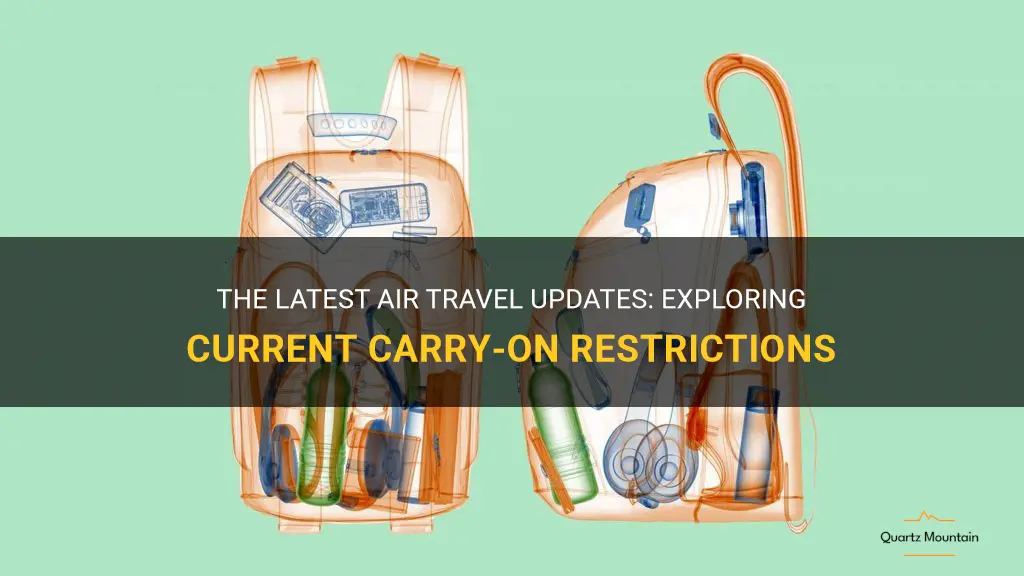
Air travel is an incredible convenience that allows us to zip across the globe in a matter of hours. However, as anyone who has flown recently knows, there is a long list of restrictions and regulations when it comes to what you can bring on board. One of the most important and widely discussed regulations is the carry-on restrictions. These rules dictate the size, weight, and contents of the baggage we can bring on board with us. From the size of your shampoo bottles to the number of spare batteries you can pack, these restrictions are designed to prioritize safety and security in our skies. In this article, we will explore the current carry-on restrictions and what they mean for travelers.
| Characteristics | Values |
|---|---|
| Maximum Dimensions | 22" x 14" x 9" (56 x 36 x 22.9 cm) |
| Maximum Weight | Typically between 15-18.5 lbs (6.8-8.4 kg) |
| Number of Bags Allowed | 1 carry-on bag plus 1 personal item |
| Personal Item Dimensions | Varies by airline, but typically around 17" x 10" x 9" (43 x 25 x 23 cm) |
| Restricted Items | Liquids, aerosols, gels over 3.4 oz (100 mL), sharp objects, firearms, etc. |
| TSA PreCheck Eligibility | Allows for expedited security screening |
| Global Entry Eligibility | Allows for expedited customs clearance upon arrival in the U.S. |
| Additional Fees | Checked bag fees may apply, depending on airline and fare type |
What You'll Learn
- What are the current carry-on restrictions for air travel in terms of size and weight limits?
- Are there any specific items that are prohibited from being carried on board an aircraft?
- Can passengers bring liquids or gels in their carry-on bags, and if so, what are the limitations?
- Are there any restrictions on electronics or batteries in carry-on luggage?
- How do the carry-on restrictions vary for different airlines or countries?

What are the current carry-on restrictions for air travel in terms of size and weight limits?
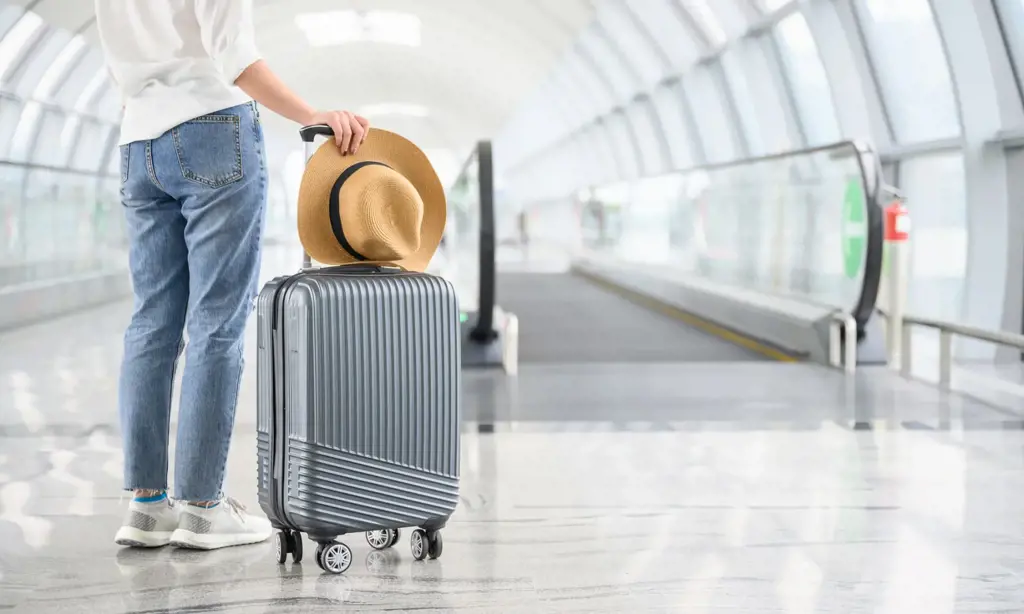
As air travel continues to become more popular, it is important to stay up to date on the current carry-on restrictions for size and weight limits. These regulations ensure the safety and efficiency of the flight, as well as the comfort of all passengers on board. In this article, we will discuss the current carry-on restrictions for air travel and provide some tips on how to pack efficiently within these limits.
Most airlines have specific guidelines for the size and weight of carry-on luggage. These regulations vary slightly from one airline to another, so it is always a good idea to check with your specific airline before your flight. However, there are some general guidelines that are commonly followed by many airlines.
The most common size restriction for carry-on luggage is a maximum linear dimension of 22 inches (56 cm). This includes the length, width, and height of the bag. Some airlines may have slightly different dimensions, so it is important to check with your airline. Additionally, there may be specific weight restrictions for carry-on luggage, typically ranging from 15 to 22 pounds (7 to 10 kg).
It is worth noting that these size and weight restrictions apply to the main piece of carry-on luggage, such as a suitcase or backpack. Most airlines also allow passengers to bring a personal item on board, such as a purse, laptop bag, or small backpack. The size restrictions for personal items are generally more lenient, but it is always a good idea to check with your airline for specific guidelines.
To pack efficiently within these limits, there are a few tips to keep in mind. First, consider using a lightweight suitcase or backpack to reduce the overall weight of your luggage. This will allow you to pack more items within the weight limit. Additionally, use packing cubes or compression bags to maximize the space in your luggage. These storage solutions help to organize your belongings and compress them to create more room.
When packing your carry-on luggage, prioritize essential items such as travel documents, medications, and valuables. Pack these items in an easily accessible part of your bag, such as a front pocket or top compartment. This will ensure that you can easily retrieve them during the flight.
Lastly, be aware of any additional restrictions or regulations that may apply to certain items. For example, there may be restrictions on carrying liquids, sharp objects, or batteries in your carry-on luggage. Familiarize yourself with these regulations to avoid any issues at the airport security checkpoint.
In conclusion, the current carry-on restrictions for air travel in terms of size and weight limits generally include a maximum linear dimension of 22 inches and a weight limit ranging from 15 to 22 pounds. It is important to check with your specific airline for their guidelines, as these restrictions may vary slightly. To pack efficiently within these limits, use lightweight luggage, packing cubes or compression bags, and prioritize essential items. Familiarize yourself with any additional restrictions on certain items to ensure a smooth journey through airport security.
Update on Cape Verde Travel Restrictions: What You Need to Know
You may want to see also

Are there any specific items that are prohibited from being carried on board an aircraft?
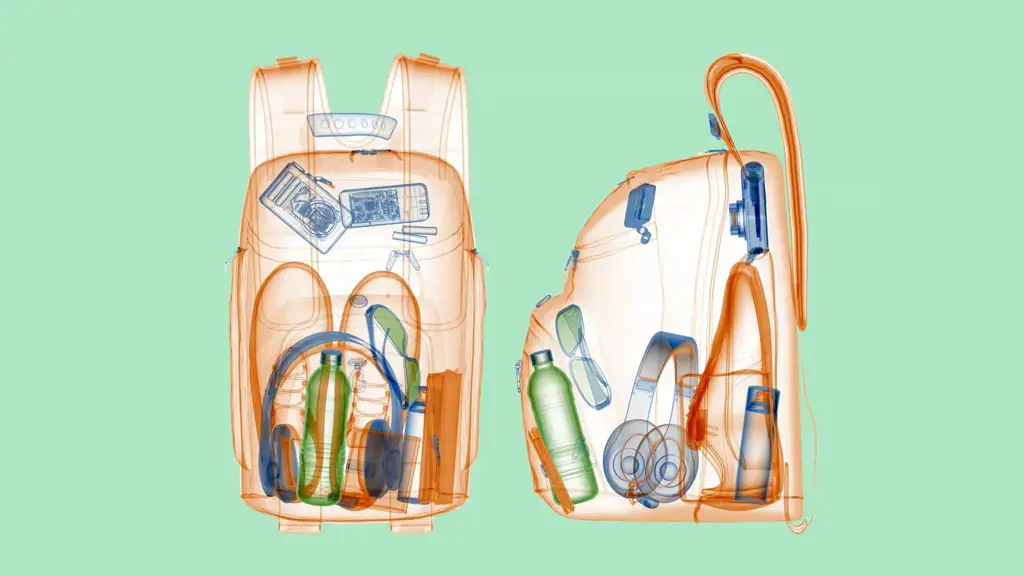
When it comes to air travel, there are certain items that are strictly prohibited from being carried on board an aircraft. These items are considered a threat to the safety and security of the passengers and crew, and therefore are not allowed to be taken in the cabin.
One of the most common items that are prohibited are weapons and firearms. This includes guns, knives, and other sharp objects that could be used as a weapon. These items are strictly regulated and must be declared and checked in with the airline.
Explosive and flammable materials are also strictly prohibited from being carried on board an aircraft. This includes items such as fireworks, gasoline, and ammunition. These materials pose a serious risk to the safety of the aircraft and are therefore not allowed in the cabin.
Additionally, certain chemical substances and hazardous materials are also prohibited. This includes items such as pesticides, bleach, and other toxic chemicals. These substances can be dangerous if mishandled or accidentally released on the aircraft.
Liquids and gels are subject to specific restrictions. Passengers are only allowed to bring small amounts of liquids, gels, and aerosols in containers of 3.4 ounces (100 milliliters) or less. These containers must be placed in a clear, plastic, zip-top bag and presented separately for screening at the security checkpoint.
Other items that are prohibited from being carried on board an aircraft include sporting goods such as bats, hockey sticks, and golf clubs. These items could potentially be used as a weapon and are therefore not allowed in the cabin. Additionally, certain tools and sharp objects, such as screwdrivers and scissors, are also restricted and must be checked in with the airline.
It's important for passengers to review the list of prohibited items before traveling to ensure that they comply with the regulations. Violating these restrictions can result in fines, confiscation of the item, and potentially being denied boarding.
In conclusion, there are specific items that are prohibited from being carried on board an aircraft for the safety and security of the passengers and crew. These items include weapons, explosive and flammable materials, hazardous substances, liquids and gels, sporting goods, and certain tools and sharp objects. Passengers should review the regulations before traveling to avoid any issues at the airport.
The Essential Guide to Carry On Travel Size Restrictions: What You Need to Know
You may want to see also

Can passengers bring liquids or gels in their carry-on bags, and if so, what are the limitations?
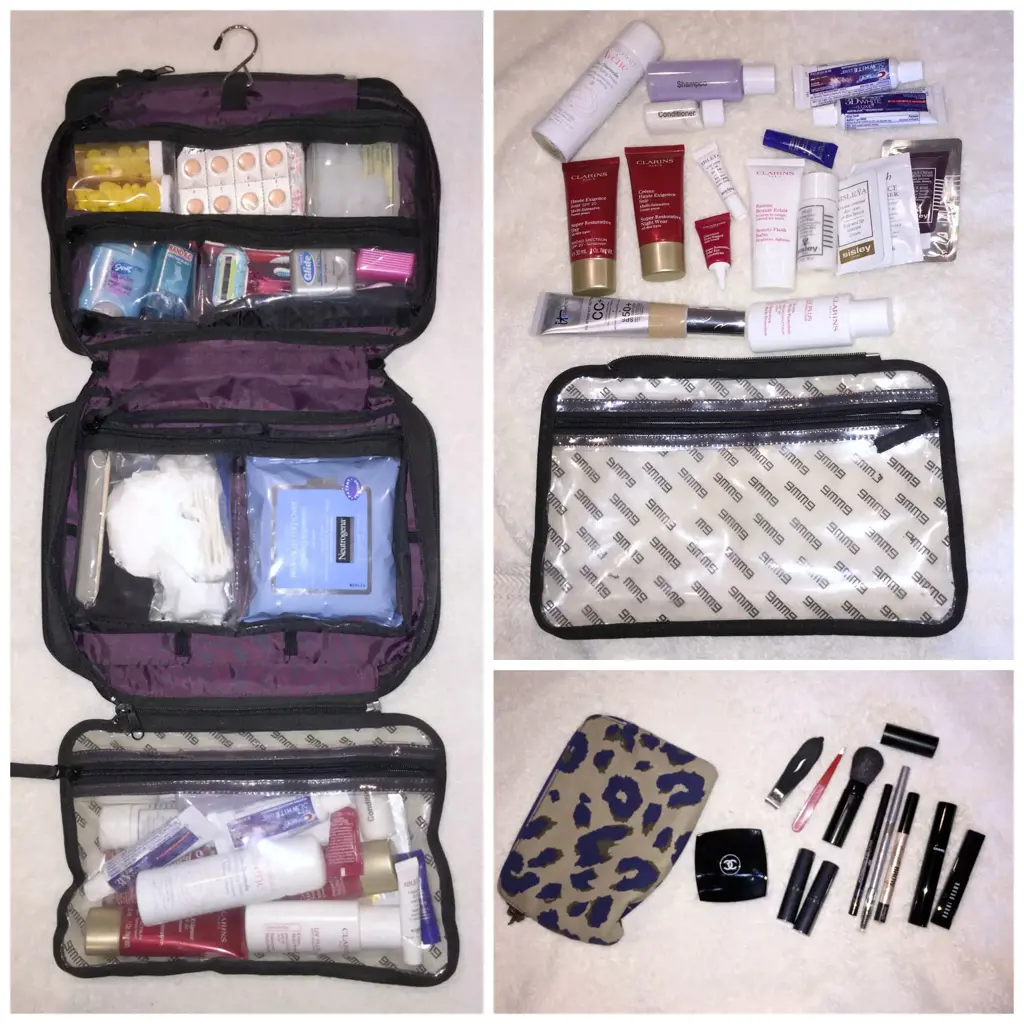
When it comes to traveling by air, many passengers are unsure about what items they are allowed to bring in their carry-on bags. One common question is whether passengers can bring liquids or gels in their carry-on bags, and if so, what are the limitations?
The Transportation Security Administration (TSA) has specific guidelines regarding liquids and gels in carry-on bags. According to the TSA's rules, passengers are allowed to bring liquids and gels in containers that are 3.4 ounces or less. These containers must also fit in a single quart-sized, clear, plastic zip-top bag. This bag should be easily accessible, as passengers will need to remove it from their carry-on bags during the security screening process.
Some common examples of liquids and gels that fall within the guidelines include shampoo, conditioner, lotion, toothpaste, and sunscreen. These items should be placed in the quart-sized bag with other liquids and gels, and each passenger is limited to one bag. It's important to remember that the containers must be 3.4 ounces or less, so larger containers of these items should be packed in checked luggage.
There are a few exceptions to the 3.4-ounce limit. Passengers who have medical conditions or disabilities are allowed to bring larger quantities of medically necessary liquids and gels in their carry-on bags. In these cases, passengers are required to inform the TSA officer before the screening process begins. The officer may need to perform additional screening procedures on these items.
It's worth noting that the 3.4-ounce limit applies to the container size, not the amount of liquid or gel inside. This means that passengers can bring containers that are partially filled, as long as the total amount of liquid or gel does not exceed 3.4 ounces. For example, a passenger can bring a 2-ounce bottle of shampoo that is half-full, as long as the total amount of shampoo does not exceed 3.4 ounces.
It's also important to know that some items are prohibited in carry-on bags altogether. These items include flammable liquids and gels, such as gasoline and lighter fluid. Additionally, certain sharp objects and weapons are not allowed in carry-on bags. Passengers should consult the TSA's website or contact their airline for a comprehensive list of prohibited items.
In conclusion, passengers are allowed to bring liquids and gels in their carry-on bags as long as they adhere to the TSA's guidelines. These guidelines state that liquids and gels must be in containers that are 3.4 ounces or less and placed in a quart-sized, clear, plastic zip-top bag. Passengers with medical conditions or disabilities may be allowed to bring larger quantities of medically necessary liquids and gels, but they must notify TSA officers ahead of time. It's important to check the TSA's website or contact your airline for specific information on what is allowed in carry-on bags.
Britain Implements New Travel Restrictions in Response to Emerging Covid-19 Variants
You may want to see also

Are there any restrictions on electronics or batteries in carry-on luggage?

When traveling by air, it is important to be aware of the rules and restrictions regarding electronics and batteries in carry-on luggage. These restrictions are in place for the safety of passengers and the crew. Here are some important things to know:
- Electronics in carry-on luggage: Generally, most electronic devices are allowed in carry-on luggage. This includes items such as laptops, tablets, smartphones, cameras, and e-readers. However, it is always a good idea to check with your airline's specific rules and regulations, as there could be some restrictions on certain devices.
- Battery restrictions: There are restrictions on the size and type of batteries that can be carried in your carry-on luggage. Lithium-ion batteries, which are commonly used in electronic devices, are allowed in carry-on luggage. However, spare batteries or power banks with a capacity of more than 100 watt-hours are not permitted in carry-on luggage. These must be packed in your checked luggage.
- Portable electronic devices: Some airlines may have specific rules regarding the use of portable electronic devices during the flight. For example, during takeoff and landing, you may be required to turn off and stow your devices. It is important to follow these instructions to ensure a safe flight.
- TSA rules: The Transportation Security Administration (TSA) has specific rules regarding electronics and batteries in carry-on luggage. These rules are in place to ensure the security of the aircraft. It is always a good idea to check the TSA website or contact them directly for the most up-to-date information on these restrictions.
- Packing and storing: When packing your electronics in your carry-on luggage, it is important to ensure they are securely stored to avoid damage during the flight. Use protective cases or bags to keep your devices safe. You should also avoid packing heavy or bulky electronics in an overhead bin, as they may shift during the flight and cause injury.
In conclusion, there are some restrictions on electronics and batteries in carry-on luggage when traveling by air. It is always best to check with your airline and the TSA for the most up-to-date rules and regulations. By following these restrictions and taking proper precautions when packing and storing your electronics, you can ensure a safe and hassle-free flight.
Understanding Delta Travel Restrictions: An Essential Guide and Interactive Map
You may want to see also

How do the carry-on restrictions vary for different airlines or countries?
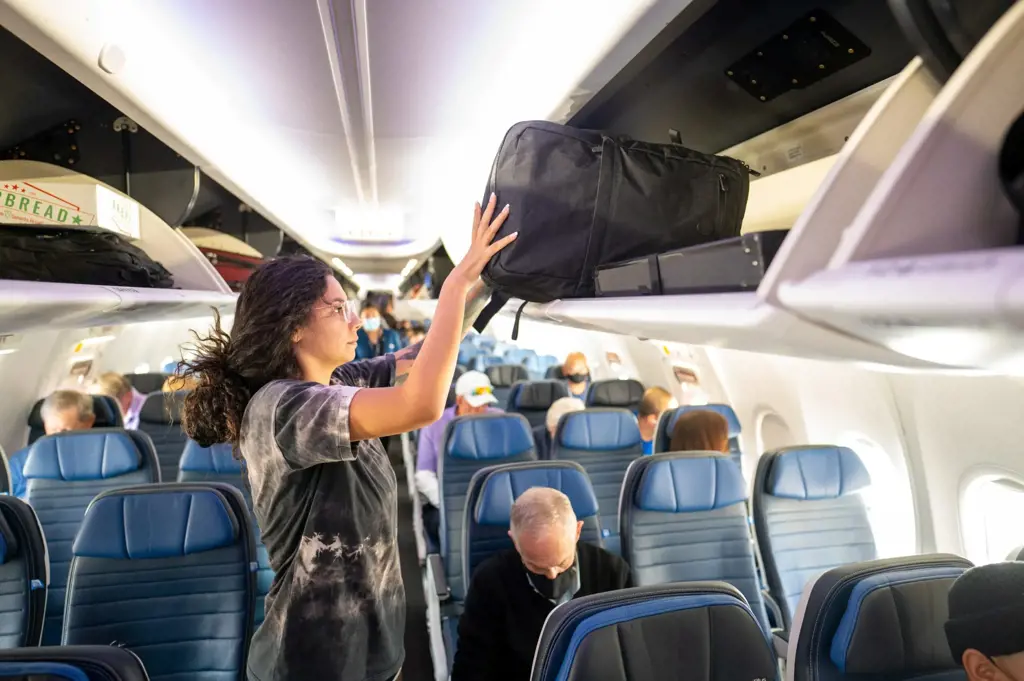
When it comes to air travel, one of the most important things to consider is the carry-on restrictions imposed by different airlines and countries. These restrictions vary depending on several factors, including the airline's policies and the country's security regulations. In this article, we will explore how these carry-on restrictions can vary for different airlines or countries.
Firstly, let's take a look at how carry-on restrictions can differ among various airlines. Each airline sets its own rules and regulations regarding the size, weight, and contents of carry-on luggage. For example, some airlines may allow smaller carry-on bags, while others may have more lenient size restrictions. Similarly, some airlines may impose weight limits, while others may allow passengers to carry heavier bags. It is essential to check the specific guidelines of the airline you are flying with to ensure that you comply with their carry-on restrictions.
Moreover, the contents of carry-on bags can also be subject to different restrictions by various airlines. Certain airlines may have stricter policies regarding items such as liquids, aerosols, and gels. These airlines may require passengers to adhere to the 3-1-1 rule, which states that all liquids, aerosols, and gels must be placed in containers no larger than 3.4 ounces (100 milliliters) and placed in a single, clear, quart-sized plastic bag. This rule aims to enhance airport security by limiting the amount of potentially hazardous substances that can be brought on board.
Apart from airline-specific restrictions, carry-on restrictions can also vary from one country to another. Each country has its own security regulations that passengers must follow. These regulations may include limitations on the size, weight, and contents of carry-on bags. For example, some countries may have more stringent security measures in place, leading to stricter carry-on restrictions. It is crucial to familiarize yourself with the specific regulations of the country you are traveling to or transiting through to avoid any inconveniences at the airport.
To ensure a smooth and hassle-free travel experience, it is essential to check the carry-on restrictions of both the airline and the country you are traveling to. This information can usually be found on the airline's website or by contacting their customer service. Familiarize yourself with the size, weight, and content limitations for your carry-on luggage to avoid any last-minute surprises at the airport. By adhering to these restrictions, you can help ensure a safe, efficient, and enjoyable journey.
Exploring the CDC's Updated Travel Restrictions Amid the Omicron Variant Surge
You may want to see also
Frequently asked questions
As of now, the current carry on restrictions for air travel generally include limits on the size and weight of carry on bags. Most airlines allow passengers to bring one small personal item, such as a purse or laptop bag, in addition to one larger carry on bag. The dimensions and weight limits for these bags may vary by airline, so it's important to check with your specific airline before your flight.
The Transportation Security Administration (TSA) has implemented restrictions on bringing liquids in carry on bags. Passengers are allowed to bring liquids in containers that are 3.4 ounces (100 milliliters) or smaller, and these containers must be placed in a clear, quart-sized bag. Each passenger is limited to one quart-sized bag of liquids. It's important to note that this restriction does not apply to medications, baby formula, and breast milk, which are allowed in larger quantities.
In response to increased security concerns, there have been restrictions on electronics in carry on bags for certain flights. In general, electronics larger than a cell phone, such as laptops and tablets, must be taken out of carry on bags and screened separately at security checkpoints. However, this requirement may vary by airline and destination, so it's important to check with your airline before your flight.
There are certain items that are not allowed in carry on bags due to safety regulations. These items include sharp objects like knives and scissors, firearms, explosives, flammable items, and certain sporting goods. Additionally, each airline may have its own specific list of prohibited items, so it's important to review the guidelines provided by your airline before packing your carry on bag. It's also a good idea to check the regulations of your destination country, as they may have additional restrictions on certain items.







